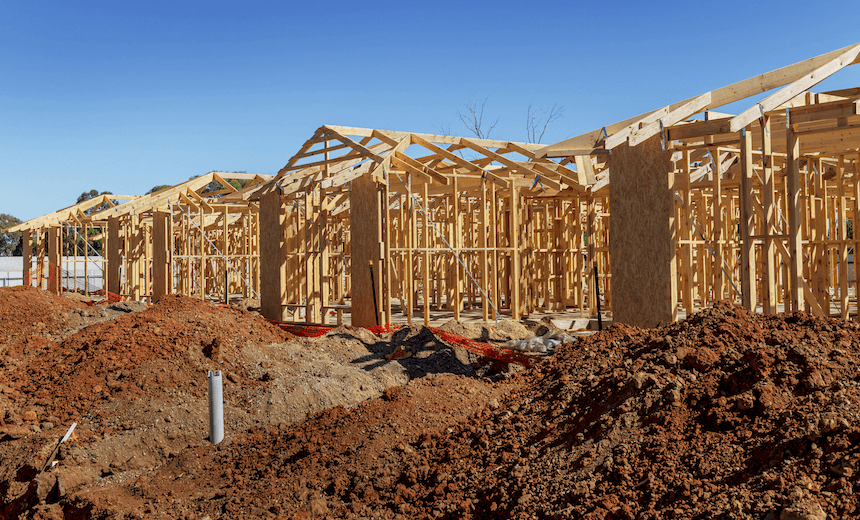Everything conspires against affordable housing: the regulations, the cost of building and most of all the market. But all that can be fixed. AUT construction professor John Tookey explains how.
Housing in New Zealand is in trouble in so many ways. Quality, cost and sustainability all have roles in the discourse. But the critical issue, both locally and nationally, is the Auckland affordability crisis which is creating economic instability. How did we get here and where next? The culprits have all been paraded before the us – builders overcharging, lack of competition in materials, foreign investors, property speculators. Everything up to and including “A big boy did it and ran away”. So why this mess?
Technology
In 1965, Intel co-founder Gordon Moore noticed the number of transistors per square inch on integrated circuits doubled annually, while at the same time the price of each transistor kept going down. The eponymous “Moore’s Law” has become our benchmark expectation for product performance ever since. The phone or computer you use gets ever more capable, but the price doesn’t rise. Your smartphone has a high-quality camera, fast downloads, increased storage and route finding with GPS, but probably didn’t cost any more than the last one you owned.
By contrast, what has been happening in the building industry over the last 50 years? Not much. Houses are built as they were, using the same materials and trades, and taking the same amount of time. Construction productivity flatlines at $34/hr added value compared to a national average of $48/hr, with innovation 10% below the national average. Consequently building new is growing in expense, irrespective of economies of scale. We build approximately 7200 dwellings a year against demand of 14,000 a year for the next 30 years. The only way to meet housing needs would be to double labour productivity through innovation, or double our total workforce in housebuilding. Since we do not have a transient labour force of skilled workers as in Europe, productivity through technology is where we need to invest.
Housing types
‘Affordable’ houses are more expensive to build per square metre than larger properties. Typically, affordable homes are two or more storeys and attached rather than detached. The scaffolding and other technical requirements (some related to the Health and Safety Act 2016) lead to a cost of around $3400sqm. Conversely large single-storey houses are $2000sqm. The result? Affordable homes are affordable to the end purchaser, not the builder in the value chain. Why would a builder build lower-margin housing for the public good if not compelled to do so?
New homebuyers tend to specify the largest possible house on their section in order to incorporate the maximum residual value for themselves. Thus we see census trends in house building showing more four- to five-bedroom properties being built, while affordable two- to three-bed units are in decline (see graph below).
In short, the market is driving the wrong outputs at the wrong end of the market. Special Housing Areas (SHA) fail to change these trends, with stand-alone sections developed first and affordable housing developed last. Indeed, 56% of SHAs have been de-established.
Fragility
Our housing industry is literally a cottage industry: 98.5% are single person, ephemeral companies subsisting from invoice to invoice, using credit lines to stay liquid. Their risk profile requires spreading their effort over several projects simultaneously to maintain turnover. This industry corpus increases production scale without recruiting more tradies and increasing their risk. Hence costs climb with demand. They are inefficiently organised with poor bargaining power compared to group builders. Most therefore fear the boom-bust cycle. Altruism for homebuyers is not among their priorities. Builders take only the work they can manage to limit exposure to the ‘bust’ cycle, thinking in terms of three to five years until the downturn – but indicators that it might be on its way are already appearing.
Land
Land supply is core to unaffordability, but it is fundamentally wrong to assume that more land being released and consented more cheaply and rapidly equals more housing more quickly. This is only true if industry capacity is scalable to demand and the market operates perfectly. ‘Material availability’ doesn’t automatically deliver higher production rates. Land improvement/preparation capacity is as constrained as housebuilding. Doubling available land will not double the number of land developers or their capacity. Imagine a car producer received an additional million tonnes of sheet steel at their factory at zero cost. Would more cars be produced? No. A more likely scenario is optimised production to factory capacity, retaining the current selling price, margin and brand value.
The problem is exacerbated because before land is ready for house building, costly infrastructure, drainage and improvement is required. Consequently it is a tough, cash-intensive industry to enter. Once again we expect industry to absorb the cost and risk of delivering societal needs when increasing production forces down sale prices for all producers. Is it reasonable to expect markets to deliver societal needs then be shocked when they function in their own interests?
The future
Einstein said: “We will not solve the problem by using the same reasoning that created the problem.” By contrast, current government thinking on land availability is the equivalent of Captain Blackadder anticipating the plan for the next offensive: “It’s the same plan as last time and the 17 times before that.” Blackadder economics from government will not cut it this time. Land release and Special Housing Areas are not solving affordability issues since social outcomes are not compelled through ‘use it or lose it’ clauses, or incentivised through additional profit. Compulsion (or profit motivation) in land development is required if we take affordability seriously.
We need incentives to use prefabrication to increase productivity. Why not specifically fast-track consenting for prefabricated housing? Why not make consents zero cost for two- to three-bedroom housing and double or triple current rates for four- to five-bed housing? If this is a national crisis, why not create a national prefabrication plant producing inexpensive kit-set housing with pre-approved building consent for generic designs?
How about incentivising landlords to sell off their buy-to-let investment properties? Imagine a scheme where landlords agree to divest their portfolio so they can place their capital gain tax-free into KiwiSaver – provided they commit to not directly or indirectly owning investment property in the future. Imagine genuine state housing (not mortgage assistance schemes) delivering the two-to three-bedroom housing we need, rather than expecting industry to deliver this category of homes with lower profits and higher risk?
Ultimately government must accept the seriousness of affordability. Blackadder economics and wishful thinking will not magically change what is and is not profitable for the housing industry to build. We are at a tipping point for the New Zealand economy. The electorate know it. The question for government is whether laissez-faire ideology or pragmatic intervention will win the debate.
Either way, decisive action is required now.
This article is taken from the Public Service Association – a union for public servants – book Progressive Thinking: Ten Perspectives on Housing, in which contributors consider everything from land and building costs, to the inter-generational effects of the tax system on New Zealand’s housing markets; from renters’ rights and the housing needs of people with disabilities, to the role of the state and local government in solving the problem. You can download the book for free at www.psa.org.nz/housingbooklet or buy a hard copy at Unity Books in Auckland and Wellington.
The Society section is sponsored by AUT. As a contemporary university we’re focused on providing exceptional learning experiences, developing impactful research and forging strong industry partnerships. Start your university journey with us today.

